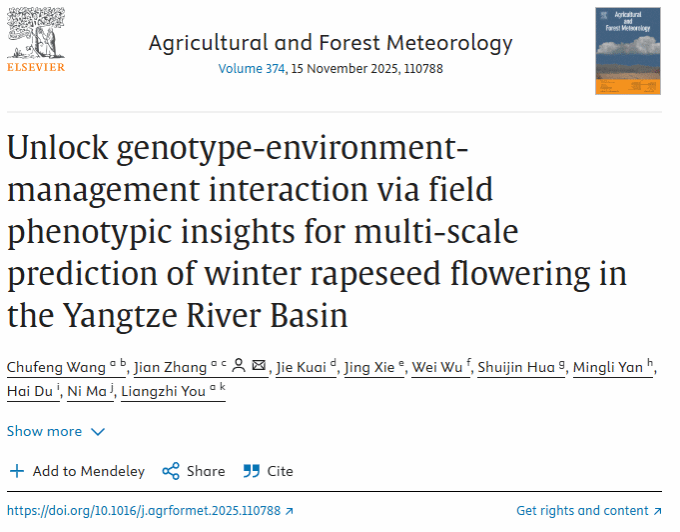
Abstract
Crop yields are significantly impacted by adverse climatic events during flowering. Accurately predicting flowering periods is crucial for optimizing strategies to enhance crop yields. Previous studies used crop models to predict flowering periods, challenging due to limited sowing date data and generalizability across different cultivars and environment. In this study, plot experiments and high-throughput field phenotypes were coupled to determine the impact of genotype–environment–management interaction (G × E × M) on the flowering period of winter rapeseed in the Yangtze River Basin. The findings indicated that the pre-winter leaf area index adeptly indicated the impact of sowing dates on flowering period. The leaf color during winter distinguished the genotype effects, and the cumulative temperature between 50 and 60 days after the winter solstice (WS) was identified as the pivotal climate factor. The predictive indicators for the flowering period were referenced to the time point of the WS, alleviating the constraints of uncertain sowing dates. A combination of these indicators could be used to predict the flowering period in 24 winter rapeseed cultivars with an error of < 4 days at experimental plots across the Yangtze River Basin. Notably, the accuracy of flowering prediction model was validated on an actual farmland in Jingzhou City, aligning well with the observed flowering dynamics from satellite data. To extend the utility of the model to regional scales, distribution maps of the flowering period were generated using a linear regression model that correlated post-winter cumulative temperature with the flowering period, considering a 2.0 °C warming level by 2050 across the entire Yangtze River Basin. Results show higher temperatures or lower cumulative solar radiation during the flowering period will appear in many regions in the Yangtze River Basin. The findings of this study hold promise for aiding region-specific crop cultivation and breeding in the future.






